Mastering Automated Forex Trading Techniques
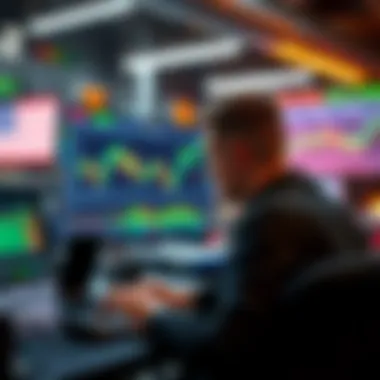
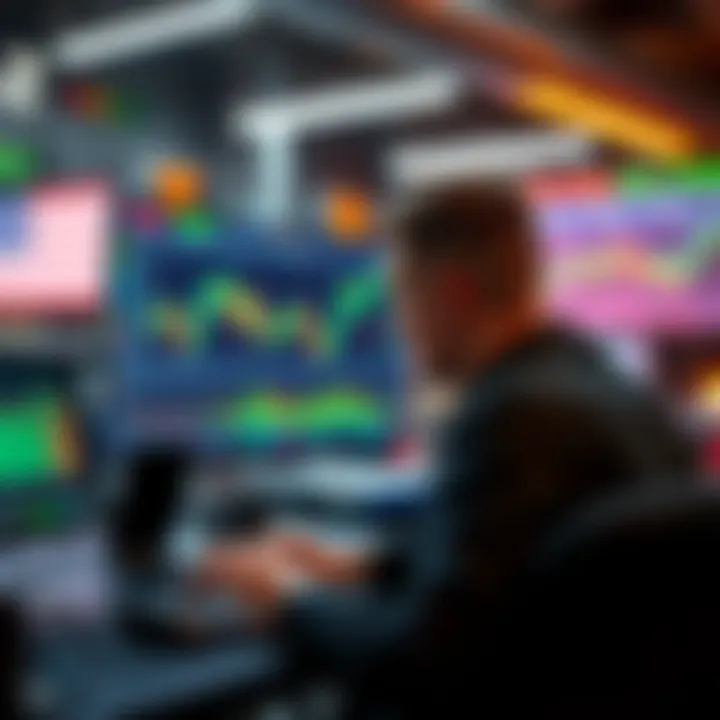
Intro
In the dynamic landscape of forex trading, the infusion of technology brings forth a shift that captures the imagination of traders across the globe. Not long ago, the notion of relying on automated systems to carry out trades seemed fanciful, yet today it is a reality that many individuals and financial institutions embrace. Automating forex trading is more than just a trend; it represents a substantial evolution in how trades are executed, analyzed, and monitored. This guide will journey through the intricacies of utilizing robotic technology within the realm of forex trading, shedding light on both the benefits and the challenges that accompany this modern approach.
Understanding the fundamental mechanisms of automated trading systems is paramount for traders who wish to leverage automation effectively. From the basic definitions that lay the groundwork to nuanced strategies, this guide simplifies the complexities of forex automation. It aids both beginners and seasoned traders in grasping how to enhance their trading practices through technology. Each section will meticulously unveil pivotal elements such as platform selection, programming considerations, and the indispensable necessity of backtesting—a cornerstone of any automated trading strategy—all presented in a manner designed to appear intuitive to the reader.
By the end, you’ll not only appreciate how automation transforms forex trading but also acquire the knowledge to integrate robotics harmoniously into your trading practices.
Key Terms and Definitions
With any field, understanding the jargon is crucial. Here’s a primer on some key terms that will pave the way for comprehending automated forex trading:
- Expert Advisor (EA): This is a software program in MetaTrader platforms that automates trades based on predefined criteria.
- Algorithmic Trading: The use of complex mathematical models to make trading decisions automatically.
- Slippage: Occurs when a trade is executed at a different price than expected, often due to market conditions.
- Liquidity: The ease with which an asset can be bought or sold without causing a significant impact on its price.
Whether you’re just starting or you’ve dabbled in the trading game, having a solid grasp on these terms will give you a leg up as you navigate through the world of forex automation.
"The greatest danger in times of turbulence is not the turbulence; it is to act with yesterday's logic."
Expert Advice
Entering the forex trading world can feel overwhelming, especially with all the technology at your disposal. Here are some nuggets of advice to keep in mind while embarking on this journey:
Tips for Beginner Investors
- Start Small: Don’t dive headfirst into the deep end. Begin with a demo account to practice your strategies without risking your capital.
- Educate Yourself: Invest time in learning about forex pairs, market trends, and how automation works. Knowledge is a trader's best friend.
- Choose the Right Broker: Ensure your broker supports automated trading and has a solid reputation.
Understanding Risk Tolerance
When it comes to trading, assess how much risk you can stomach. Ask yourself:
- How much can I afford to lose?
- What is my investment timeline?
- Am I comfortable with the possibility of rapid changes in investment value?
Establishing your risk tolerance plays a pivotal role in choosing automated strategies that align with your goals.
As we delve deeper into the article, these foundational concepts and pieces of advice will serve as your toolkit. Preparing for the multifaceted maze of forex trading with automation is no small feat, but with the right preparation, it becomes a thrilling venture that reshapes financial horizons.
Understanding Forex Trading
Understanding Forex trading is crucial for anyone stepping into the realm of automated trading. The forex market, comprising currencies from all corners of the globe, is the largest, most liquid financial market, with daily trading volumes often exceeding $6 trillion. This vast arena presents both opportunities and challenges. Comprehending its mechanics helps traders design automated systems that can navigate the complexities effectively.
When you grasp what Forex trading entails, you not only recognize its potential but also its inherent risks. The importance of knowing your way around the market can’t be overemphasized, especially when you are thinking of incorporating robotic technology into your trading strategies.
What Is Forex Trading?
Forex trading, or foreign exchange trading, involves buying and selling currencies with the aim of making a profit. Unlike stock markets, Forex operates 24 hours a day throughout the weekdays, allowing traders to capitalize on price movements at any time. Traders often speculate on the direction of currency pairs, like the euro against the dollar (EUR/USD) or the dollar against the yen (USD/JPY).
For instance, if you believe that the Euro will strengthen against the Dollar, you would buy the EUR/USD pair. If your prediction holds and the price rises, you can sell it later for a profit. This kind of trading requires a strong grasp of economic indicators and geopolitical events since they significantly influence currency movements.
Basic Terminology in Forex
Navigating the forex world comes easier when you're familiar with its unique lingo. Here are key terms often thrown around:
- Pip: Short for "percentage in point," it's the smallest price move that currency pairs can make based on market convention. For most pairs, this is 0.0001.
- Spread: The gap between the buying price and the selling price of a currency pair, directly impacting your profit margins.
- Leverage: This allows you to control a larger position than you could with just your capital. For example, a 100:1 leverage means that for every dollar of your own money, you can trade $100.
- Margin: The funds required to open and maintain a leveraged position.
- Lot: A standardized unit used to measure the amount of currency in a transaction. There are three standard sizes: standard lots, mini lots, and micro lots.
Becoming acquainted with this terminology is the first step to ensuring you can communicate effectively about Forex trading.
Understanding these concepts prepares you for deeper exploration into the mechanics of automated trading systems and their implementation within this thrilling, fast-paced environment.
"Knowledge is power, but it is useless without execution and follow-through in the trading arena."
This foundational knowledge leads seamlessly into the technological advances that have shaped automated Forex trading today.
The Evolution of Automated Trading
In the landscape of Forex trading, automation represents not just a mere convenience but an evolutionary step, reshaping how trades are executed and strategies are devised. The journey from manual trading to automated systems has been paved with significant milestones that have expanded trading opportunities while mitigating human errors. Understanding this evolution is crucial for any trader looking to harness technology effectively.
History of Algorithmic Trading
Algorithmic trading, as we recognize it, didn't spring forth overnight. Its roots run deep into the history of market trading, originally influenced by mathematical theories and advancements in computational technology. The 1970s saw the advent of electronic trading, but the true boom happened in the late 1990s and early 2000s when trading began to transition from the physical trading floors to digital platforms.
Initially, traders would rely on manual input, often with a flurry of papers and telephone calls. Yet, as computing power increased and the internet connected market participants globally, the idea of placing trades through a set of predefined instructions began to resonate with traders looking to maximize efficiency. These instructions, or algorithms, could analyze vast swaths of data at speeds unattainable by humans.
The introduction of high-frequency trading firms further propelled this trend, deploying complex algorithms capable of executing thousands of trades per second. Importantly, these developments led to heightened competition and reduced spreads, changing the way trading profits were perceived.
As the market matured, so did the sophistication of these algorithms, allowing for strategies ranging from simple rule-based trading to complex machine learning models that adapt based on historical data. The transformation from a human-centric approach to an automation-driven one signifies a monumental shift, demanding traders to adopt new skills and remain vigilant about the technology at their disposal.
Technological Advances in Trading
The rapid strides in technology have fueled the evolution of Forex trading automation. Once confined to theoretical frameworks, technological breakthroughs have made it possible to deploy highly complex systems in a retail trading environment. The emergence of APIs, for example, has been revolutionary; they allow traders to connect their strategies directly to brokerage platforms, empowering individual investors with tools that were once exclusive to institutional players.
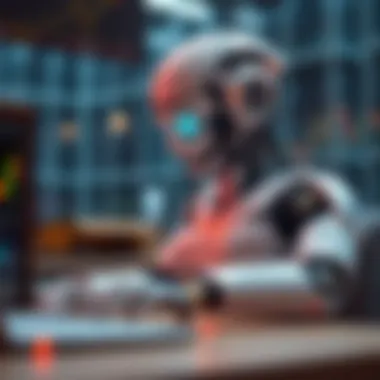
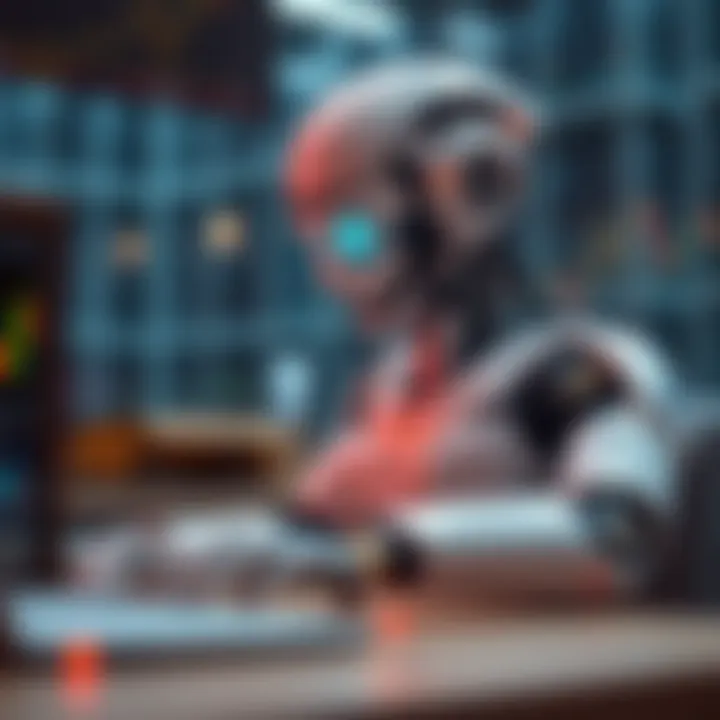
Among notable technological advances, cloud computing stands out. It facilitates Scalper, Trend-Follower, and Range Robots by allowing traders to run their systems without the need for high-end hardware. This democratizes access, allowing more participants into the world of automated trading. Additionally, improvements in data analytics have given traders the ability to process real-time and historical data more effectively. Now, traders can fine-tune systems based on market conditions, adapting dynamically to changing environments.
Moreover, the integration of artificial intelligence and machine learning into trading algorithms demonstrates an even more intriguing frontier. These technologies enable a more nuanced understanding of market behaviors, helping traders make informed decisions based on pattern recognition and predictive analytics.
In this new age of Forex trading, staying on the cutting edge of technology isn't just an advantage; it’s a necessity.
Key Points to Consider
- Historical Context: The evolution of trading from human intervention to automation highlights the importance of understanding market dynamics.
- Networking and Algorithms: The shift to algorithmic trading underscores the importance of technological literacy for today’s traders.
- Future Innovations: Keeping an eye on advancements in AI and data processing may provide the edge necessary to thrive in competitive trading environments.
Understanding the evolution of automated trading is essential not just for historical appreciation, but for forward-looking strategies. These advancements signal where the future of Forex trading is headed and provide insights into how traders can adapt and thrive.
Types of Trading Robots
In the realm of forex trading, the emergence of trading robots has fundamentally altered traditional practices, allowing traders to automate their strategies. Understanding the different types of trading robots becomes paramount for those looking to harness automation’s benefits effectively. Each robot type offers unique characteristics that cater to various trading styles and market conditions. Familiarity with these options not only enhances a trader's arsenal but also helps in making informed decisions on the most suitable approach to take. Here we explore three primary categories: scalping robots, trend-following robots, and range trading robots.
Scalping Robots
Scalping robots are designed for high-frequency trading and aim to capture small price movements throughout the day. They often execute trades in seconds or minutes, relying on rapid decision-making and minimal market exposure. The beauty of scalping robots lies in their efficiency; they can manage multiple trades simultaneously, allowing traders to take advantage of seemingly trivial price changes.
- Risk Management: Scalping requires fierce discipline. Robots must include risk management settings to prevent excessive losses, typically implementing tight stop-loss orders.
- Market Conditions: Effectiveness peaks in markets with high volatility. When price movement is steady and predictable, these bots can thrive.
However, it's not all smooth sailing. A common pitfall for scalpers is overtrading, which can incur hefty transaction fees and commissions, eating into profits. Thus, a well-tuned scalping robot should optimize trade frequency and costs meticulously, ensuring a balance between opportunity and viability.
"Scalping is not merely a quick flip; it’s an orchestration of timing and precision that automated systems can manage efficiently, within certain limits."
Trend-Following Robots
Trend-following robots capitalize on the ebb and flow of market trends, pursuing the adage of 'the trend is your friend.' These systems identify and react to sustained market movements, executing trades that align with prevailing trends while avoiding the choppiness of sideways markets.
- Indicator-Based Strategies: Often, these robots utilize popular technical indicators, including moving averages and momentum oscillators, to gauge market direction and trigger buy or sell signals when certain conditions are met.
- Long-term Viability: Unlike scalping bots, trend-following robots may hold trades longer, aiming for significant profit from a trending market.
Traders seeking a more relaxed trading approach might appreciate trend-following robots for their ability to reduce the emotional strain inherent in manual trading. Yet, the risk lies in sudden reversals and market volatility, which can lead to significant drawdowns if not managed properly.
Range Trading Robots
Range trading robots operate under the principle that markets tend to oscillate between defined support and resistance levels. These bots buy when prices are low within a range and sell at higher levels, ideally profiting from the predictable price movements.
- Market Psychology: Understanding trader behavior is crucial here. When markets stall, range traders leverage emotional responses to price fluctuations.
- Activating Algorithms: Range robots automate processes by calculating optimal entry and exit points, thus minimizing human error and emotional involvement.
While range trading can yield steady results in sideways markets, volatile conditions can throw a wrench into the works. If prices break through established levels, traders can suffer unexpected losses, marking the importance of employing flexible stop-loss parameters.
By narrowing down the specific type of trading robot that aligns with one's trading philosophy and goals, individuals can optimize their forex trading experience. With each type offering unique benefits and challenges, traders must weigh their options carefully to find the best fit for their strategy.
Selecting the Right Forex Robot
When it comes to Forex trading, choosing the right robot can make all the difference. Not all trading robots are created equal; they differ in their strategies, adaptability, and even the platforms they work with. Selecting the right Forex robot is crucial because it directly impacts not only the effectiveness of your trading strategy but also your overall success in the market.
Evaluating Performance Metrics
Before committing to a Forex robot, it's essential to evaluate its performance metrics. You want to see evidence, right? Consider key indicators such as:
- Win Rate: This shows how many trades the robot wins compared to losses. A higher percentage often indicates reliability.
- Return on Investment (ROI): Look for the returns the robot has generated over time. A good robot should consistently yield profits on your investment.
- Maximum Drawdown: This metric indicates the largest loss from a peak to a trough. It can demonstrate the robot’s risk exposure during volatile market conditions.
- Trade Frequency: Depending on your trading strategy, you might want a robot that trades frequently or one that is more conservative in its approach.
Understanding these metrics helps you gauge not just historical performance but also potential future results.
"A thorough analysis of a robot’s performance is like looking in a crystal ball; it gives you insights into what might come next."
This evaluation can keep you from jumping in headfirst without knowing if the robot is ready for the challenges of the Forex market. A robot that performs well in backtesting might not hold up in live trading, so always approach with a critical eye.
Assessing Compatibility with Trading Platforms
The next step is to ensure that your selected Forex robot is compatible with your preferred trading platform. Each platform has its own quirks—some are as user-friendly as a Sunday stroll in the park, while others can feel like climbing a mountain.
Here are a few things to consider:
- Platform Integration: Does the robot integrate seamlessly with the platform? Some robots are tied to specific platforms, while others offer a broader range of compatibility.
- API Availability: Check if the trading platform allows for external integration via APIs. A solid API connection might offer more flexible trading options.
- User Interface: A good robot should work well within the user interface of the platform. You want to minimize the learning curve and maximize ease of use.
- Support and Documentation: Make sure there is adequate support and documentation. If you run into issues, you’ll want to find guidance without tearing your hair out.
Finding a Forex robot that meshes well with your trading platform is like finding the perfect dance partner—everything flows better when there's compatibility.
Programming Your Trading Robot
The realm of Forex trading is no longer just about a savvy trader's intuition or market awareness; it extends into the sophisticated territory of programming trading robots. These automated systems are designed to execute trades based on predefined criteria and algorithms set by their developers. Emphasizing the essence of programming a trading robot can dramatically enhance trading efficiency and precision, particularly in a market as dynamic and fleeting as Forex.
When you delve into programming, you harness the potential to create personalized trading strategies that suit your unique preferences and risk tolerance. A well-constructed robot can operate incessantly, scanning markets for opportunities, and executing trades without the emotional baggage that often weighs down manual trading. This automation not only frees up valuable time but also removes the impulse-driven decisions that can lead to costly mistakes in trading.
Furthermore, as Forex trading becomes more competitive, leveraging automated systems equips traders with a significant advantage—the ability to respond quickly to market changes and execute trades at lightning speed. However, this also means that understanding programming fundamentals becomes increasingly vital. Navigating this programming landscape is both an art and a science, blending cognitive logic with strategic insight.
Understanding Programming Languages Used in Forex Robots


A cornerstone of developing a successful trading robot lies in understanding the programming languages utilized to create it. The industry does not favor one code over another, but familiarizing yourself with a few dominant languages can make the difference between a competent and a stellar automated system.
- MetaQuotes Language 4 (MQL4) and MQL5: These languages are fundamental for programming in the MetaTrader environment—one of the most widely used platforms. MQL4 is particularly popular for its simplicity and ease of learning, while MQL5 offers more advanced features and functionality, allowing for more complex algorithms.
- Python: Its versatility makes Python a favored choice for traders interested in machine learning and data analysis. The extensive libraries available in Python help in backtesting, market analysis, and data handling efficiently.
- C++: Known for speed and performance, C++ is well-suited for high-frequency trading applications where milliseconds matter. Understanding C++ can be daunting for beginners but offers unparalleled control over trading logic and execution speed.
- Java: While it’s less common in Forex trading robots, Java is still a robust language used in various financial applications, beneficial for traders who prefer different platforms.
Diving into these languages not only enhances coding skills but also opens the door to customizing your trading strategies further. Knowing how to program effectively allows traders to write algorithms that align closely with their market views, ultimately shaping more tailored trading experiences.
Developing Trading Algorithms
Once you've grasped the basics of programming languages, the next monumental task is developing trading algorithms. This process entails a thorough understanding of market mechanics, indicators, and an analytical mind that can decipher price actions and trading signals.
Creating a successful trading algorithm typically follows these steps:
- Define Your Strategy: It’s imperative to begin with a clear trading strategy. Are you focusing on scalping, day trading, or swing trading? Outline the criteria for entry and exit points based on technical indicators or market conditions.
- Backtest the Strategy: Before deploying an algorithm in live trades, backtesting is essential. By applying historical data, you simulate how your algorithm would have performed under real market conditions. This step is crucial in identifying any flaws or potential adjustments needed.
- Optimization: After backtesting, optimization involves tweaking variables to enhance performance without overfitting to past data. Striking the right balance can dramatically affect future profitability.
- Implement and Monitor: Once the algorithm is robust, it’s time to launch it in a live environment. Continuous monitoring is vital; markets are volatile, and adjustments may be necessary to keep the algorithm attuned to changing market conditions.
"The market is a living organism; just like any relationship, it requires consistent nurturing and adaptability."
Backtesting and Optimization
In the world of forex trading, where volatility reigns and small shifts can lead to significant profits or losses, the importance of backtesting and optimization cannot be understated. This process allows traders to evaluate the effectiveness of their automated strategies before committing real funds. Simply put, backtesting is like doing a dress rehearsal before the big show. It lets you identify potential pitfalls and adjust your strategy accordingly—ensuring that when the curtain rises, you're ready to perform at your best.
Backtesting essentially involves running your trading algorithm against historical data to see how it would have performed. This method offers several benefits. Firstly, it helps traders understand the strengths and weaknesses of their models. Secondly, it can significantly enhance confidence in the strategy since one can see tangible results from past market behaviors. Furthermore, optimization tweaks parameters within the trading strategy to maximize its performance based on these backtests. However, it's essential to note that optimization should not lead to overfitting, where a strategy is too finely tuned to past data, rendering it ineffective in live conditions. Proper balance is crucial here.
The Importance of Backtesting
Backtesting serves as a cornerstone in developing reliable trading strategies. By simulating trades over years of historical data, traders can assess how a particular system would handle different market conditions. For instance, consider a trader who implements a new trend-following robot. By backtesting over multiple years, including both bullish and bearish markets, they can gauge whether the robot can adapt and still deliver consistent results.
Here are a few critical reasons why backtesting holds such weight in automated forex trading:
- Risk Management: It allows traders to see possible drawdowns and risk exposure, letting them make more informed decisions about money management.
- Strategy Development: Backtesting can help to uncover various profitable strategies or trends that might not be immediately apparent through intuition or theoretical models alone.
- Time Efficiency: It helps in assessing multiple strategies and making informed decisions quicker than testing them in real time.
"A good backtest can save you from a bad trade."
In essence, without backtesting, traders are flying blind, risking their capital on untested strategies.
Common Backtesting Tools
There are various tools available that make backtesting not only possible but also efficient. Choosing the right one can save valuable time and yield better insights. Here are some common backtesting tools that traders might find useful:
- MetaTrader 4/5: Popular platforms among forex traders, offering built-in backtesting capabilities for expert advisors (EAs).
- TradeStation: Known for its advanced backtesting functions, it allows traders to execute complex strategies effortlessly.
- Amibroker: Offers extensive features for custom trading systems and performance analysis, making it a favorite among more technical traders.
- QuantConnect: A cloud-based platform that allows developers to code in C# and Python, providing testing against historical financial data.
- ForexTester: Specifically designed for forex strategies, it simulates trading environments and allows users to analyze their trades comprehensively.
Choosing any of these tools will depend on the trader's specific needs—be it auto-trading strategies or manual setups.
As you explore the realm of automated trading, understanding the role of backtesting and utilizing reputable tools will undoubtedly provide a solid foundation for your trading endeavors.
Risk Management Strategies
When engaging in forex trading, understanding and implementing effective risk management strategies is absolutely critical. Trading in currency markets without a plan to manage risk can lead to significant losses. Hence, having robust risk management tactics in place allows traders to protect their investments and pave the way for long-term success. It’s not merely about making profits; it’s about protecting what you already have while seeking the opportunities.
Effective risk management encompasses various techniques that can be tailored to individual trading styles, market conditions, and overall risk tolerance. By integrating risk management into trading practices, traders can make informed decisions that not only maximize potential returns but also mitigate potential setbacks. It’s a balancing act—recognizing the level of risk you can tolerate versus the expected rewards.
"In trading, you can be right and still lose money if you don’t manage your risk."
Position Sizing Techniques
Position sizing is the process of determining the amount of capital to risk on a specific trade. This is not a one-size-fits-all scenario; it relies heavily on personal risk appetite and market analysis. Effective position sizing ensures that sharp losses don’t decimate a trading account.
To implement sound position sizing, traders often utilize the following principles:
- Risk Percentage: Many traders decide on a percentage of their trading account they’re willing to risk per trade. Commonly, this is set around 1-2%. This approach preserves the trading capital and keeps the account stable over the long haul.
- Account Size: Your account size will dictate how much you can afford to risk. A larger account may allow for more freedom in size, while a smaller one requires more prudence.
- Trade Risk: This refers to the difference between the entry price and the stop-loss price. To calculate position size, it's crucial to define this risk first. For instance, if you're risking $100 per trade but your risk per share is $4, then you can afford to buy 25 shares ($100/$4).
Understanding position sizing is like having a toolkit—having the right tools makes all the difference between building something sturdy or having it collapse.
Setting Stop-Loss Orders
Stop-loss orders act as an essential safety net in forex trading. This technique serves as a mechanism to limit losses on a security position. By establishing a predefined exit point, traders can avoid emotional decision-making that can arise when monitoring a losing trade, allowing for a more disciplined approach.
Here’s how stop-loss orders can be effectively utilized:
- Types of Stop-Loss Orders: Traders can choose between various stop-loss types—fixed, dynamic, or trailing. Fixed stop-loss orders stay static while dynamic orders adjust based on the market price. Trailing stop-loss orders move with the market, effectively locking in profits while still protecting against downturns.
- Setting Levels: It’s vital to strategically place stop-loss levels. A stop-loss set too close to the entry price may prompt premature exits during normal market fluctuations. Conversely, one too far may expose the trader to unmanageable losses.
- Review and Adjust: As market dynamics change, so should your stop-loss settings. Regularly reviewing and adjusting these levels can be critical in maintaining a safeguard against unforeseen price movements.
By employing stop-loss orders wisely, traders can maintain their cool even when the market gets choppy, creating breathing room for recovery and further strategic plays.
For additional resources on risk management in forex trading, you can visit Investopedia or refer to CFTC's Risk Management. This will help deepen your understanding and provide greater insight into how to effectively navigate the complexities of forex trading.
Integrating Automation with Human Oversight
In the fast-paced world of forex trading, the balance between automation and human oversight is crucial. While automated trading systems can process vast amounts of data quickly, they lack the nuanced understanding and intuition that a human trader brings. Embracing both elements can lead to an optimized trading strategy that leverages the strengths of each approach. Here’s a breakdown of why this integration is vital.
Balancing Automation and Manual Trading
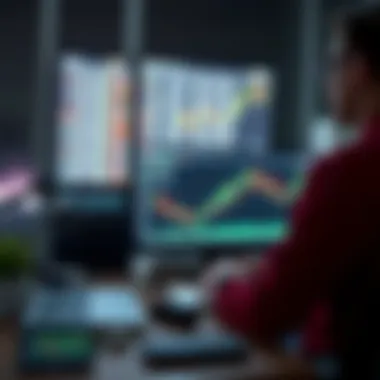
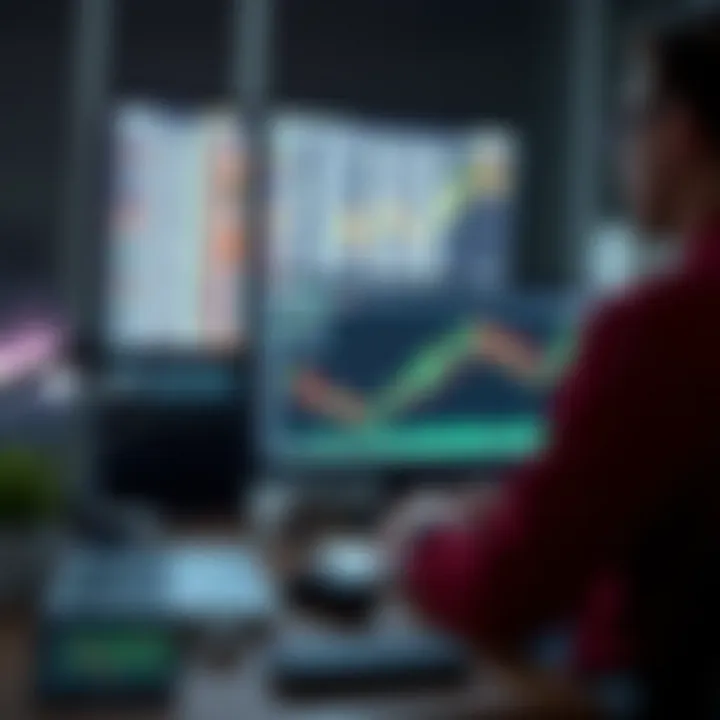
When it comes to trading, relying solely on robots can create a false sense of security. Automation excels in executing trades rapidly based on set criteria, which is immensely beneficial during volatile market conditions. However, it can struggle with uncommon market scenarios or unprecedented events.
- Human intuition can spot trends or shifts that might not trigger alerts within a pre-programmed system. Wealthy traders or seasoned investors often benefit from their years of experience in reading market sentiment, which a robot simply can't replicate.
- One strategy to balance automation is employing the automated system for routine trades while maintaining manual control over larger, more strategic positions. This hybrid model reduces the burden of constant monitoring while allowing for personal insights to guide crucial decisions.
By calibrating the level of automation suitable for each trader's style, the blend can create a safety net against unforeseen market fluctuations.
Monitoring Performance and Making Adjustments
Even the best automated trading robots need the human touch. Regularly monitoring their performance is critical for continued success. Automated systems may falter due to changing market dynamics or technological failures.
Consider these elements for effective monitoring:
- Regular evaluations of trading performance metrics are essential. This includes pips gained versus lost, win rates, and drawdowns. By systematically reviewing these statistics, traders can identify any potential areas where the robot may need tweaking or where manual intervention might be necessary.
- Implementing a feedback loop is beneficial as well. If certain market signals cause underperformance, traders can adjust the algorithms or simply recalibrate the parameters based on recent trends.
"No plan survives contact with the market." This phrase underscores the importance of adaptability. Being vigilant and making adjustments based on current market conditions can provide an edge that solely relying on automation would miss.
Ethical Considerations in Automated Trading
In the fast-paced world of forex trading, automation has become a cornerstone, offering both opportunities and challenges that must be navigated carefully. One area that deserves keen attention is the ethical implications surrounding automated trading. As traders increasingly rely on algorithms and robots to execute trades, considerations regarding fairness, transparency, and the market's integrity come to the forefront.
Regulatory Compliance
Compliance with legal standards is not just a box to tick; it's crucial for maintaining trust in the financial markets. Different jurisdictions have specific regulations governing automated trading practices. For instance, the European Securities and Markets Authority (ESMA) and the Securities and Exchange Commission (SEC) impose stringent requirements on trading firms involved in automated practices. These regulations often include reporting requirements, risk assessments, and general conduct codes to prevent deceitful practices. Compliance ensures that traders are operating within legal boundaries while protecting the interests of both investors and the wider market.
It’s essential to understand that failing to comply can lead to severe penalties, affecting not just the individual trader but the reputation of the trading platform or firm involved. As a rule of thumb:
- Familiarize yourself with local and international regulations, including tax implications.
- Maintain clear records to support compliance.
- Engage legal help if navigating through complex regulatory frameworks seems daunting.
Avoiding Market Manipulation
Market manipulation refers to actions taken to artificially influence the price of a security or the market itself, undermining trust in the system. Automated trading systems must be designed to avoid strategies that can lead to such behavior, whether intentional or accidental. It’s essential for traders to steer clear of practices like quote stuffing or layering, which can distort market conditions.
To ensure the integrity of trading practices, consider these key points:
- Use transparent strategies that are thoroughly documented and understandable.
- Monitor your trading algorithms constantly. Unexpected behavior can sometimes lead to manipulation, even if it wasn’t meant to.
- Participate in ethical discussions within trading communities or forums to gain insights and share responsible practices.
"A market thrives on integrity, and automated trading must honor that spirit to foster sustainable growth."
Building an ethical trading environment is not simply about following the rules; it's about fostering a culture of fair play and accountability. As the use of automated trading continues to reshape the forex landscape, embracing ethical considerations doesn't just serve personal interests, but also bolsters the overall health of the financial ecosystem.
Future Trends in Automated Forex Trading
As the landscape of forex trading continues to evolve, the significance of these future trends cannot be overlooked. In an industry that often resembles a game of chess, the right strategic moves can yield significant results. Automation is not merely a passing trend; it has become a linchpin in achieving consistent profitability without the emotional highs and lows that many traders face. By paying attention to what lies ahead, traders can adapt their strategies effectively and enhance their trading outcomes. Here are two major trends worth focusing on:
Artificial Intelligence and Machine Learning
With artificial intelligence (AI) gaining momentum across various sectors, its impact on forex trading is substantial. AI algorithms can analyze vast quantities of data at speeds that far exceed human capabilities. These technologies are not just crunching numbers but also identifying patterns that might elude even the most seasoned traders. For instance, machine learning models can refine their strategies based on historical data, gradually improving their accuracy over time.
Key Benefits of AI and Machine Learning in Forex Trading:
- Predictive Analysis: By employing predictive analytics, traders can make foresighted decisions, enabling a strategic advantage.
- Emotionless Trading: AI lacks the emotional biases that can cloud judgment, leading to more disciplined and consistent trading behaviors.
- Adaptive Strategies: As market conditions change, AI systems can adjust their trading algorithms on the fly to remain effective, almost like a chameleon in a vivid environment.
Consider this scenario: A trader using AI-based software notices a recurring trend when major economic announcements are made. The system alerts the trader to potential market movements, enabling timely and informed decisions. This symbiotic relationship between human intuition and machine logic can be a game changer in forex markets.
The Impact of Blockchain Technology
As technology evolution doesn’t rest, blockchain has made waves not only in cryptocurrency markets but in traditional forex trading as well. The decentralized nature of blockchain instills greater transparency and can reduce transaction costs considerably, while also speeding up the transaction process.
Considerations Surrounding Blockchain in Forex:
- Increased Transparency: Each transaction is recorded on a public ledger, making it difficult for manipulative practices to take root. This level of transparency builds trust among traders, which is critical in a market dominated by speculation.
- Cost Efficiency: With reduced reliance on intermediaries, transaction costs can plummet, which can lead to wider profit margins for traders.
- Instant Settlements: Transactions that might take days can be executed almost instantly, providing liquidity and ensuring that traders can respond to market fluctuations rapidly.
Blockchain is set to revolutionize the forex industry much like it has in other sectors, promoting efficiency and security.
In summary, the future trends of artificial intelligence and blockchain technology present compelling avenues for traders to optimize their strategies and truly capitalize on the automated forex trading landscape. Staying informed about these advancements is not just advantageous; it's imperative for anyone serious about engaging in automated forex trading.
The End
In the world of forex trading, the integration of automation stands as a significant milestone that gives traders an upper hand in the race against market volatility. As we wrap up this comprehensive guide, it is crucial to make note of the main points discussed and how they contribute to a well-rounded perspective on this ever-evolving landscape.
Recapping the Key Takeaways
To summarize, the key elements that have emerged throughout this exploration include:
- Understanding Trading Robots: Traders should appreciate different types of automated systems, such as scalping and trend-following robots, and their respective strengths and weaknesses.
- Performance Metrics: Evaluating the effectiveness of a forex robot through metrics like ROI and drawdown is essential for maintaining a robust trading strategy.
- Backtesting and Optimization: The critical role of backtesting cannot be overstated. This process ensures that the trading system is not just theoretically sound but also practically viable.
- Risk Management: Essential techniques, including stop-loss settings and position sizing, must be prioritized to safeguard investments against unforeseen market shifts.
- Human Oversight: While automation brings efficiency, a balanced approach that incorporates manual oversight will enhance decision-making and adaptability amidst market fluctuations.
- Future Trends: With the rise of artificial intelligence and blockchain, traders should remain adaptable to the technological shifts shaping their trading landscape.
This recap highlights not just the elements of successful trading but also emphasizes the importance of a disciplined approach that embraces both automation and strategic human decisions.
Encouraging Informed Decision-Making
Informed decision-making stands as a hallmark of successful trading endeavors. As you set out on your journey towards leveraging automation in forex trading, consider the following:
- Continuous Learning: Stay engaged with the latest research and developments in the realm of automated trading technologies. Resources like Investopedia and Babypips offer valuable insights.
- Community Engagement: Joining forums like Reddit can provide peer support and a platform to discuss strategies or challenges with like-minded traders.
- Tailoring Strategies: Each trader’s situation is unique. What works for one may not work for another. Customization of trading robots to fit your specific objectives and risk tolerance is paramount.
- Utilizing Tools and Resources: Tools available from various brokers can help in making informed choices. Always explore demo accounts to trial potential forex robots without financial risk.
As you leverage the insights provided in this guide, remain vigilant, adapt your strategies as necessary, and foster a healthy relationship with technology in forex trading. To succeed involves not just knowing what tools are available, but how best to utilize them in the context of your own goals and risk appetite. Always remember, fortune favors the prepared mind.















